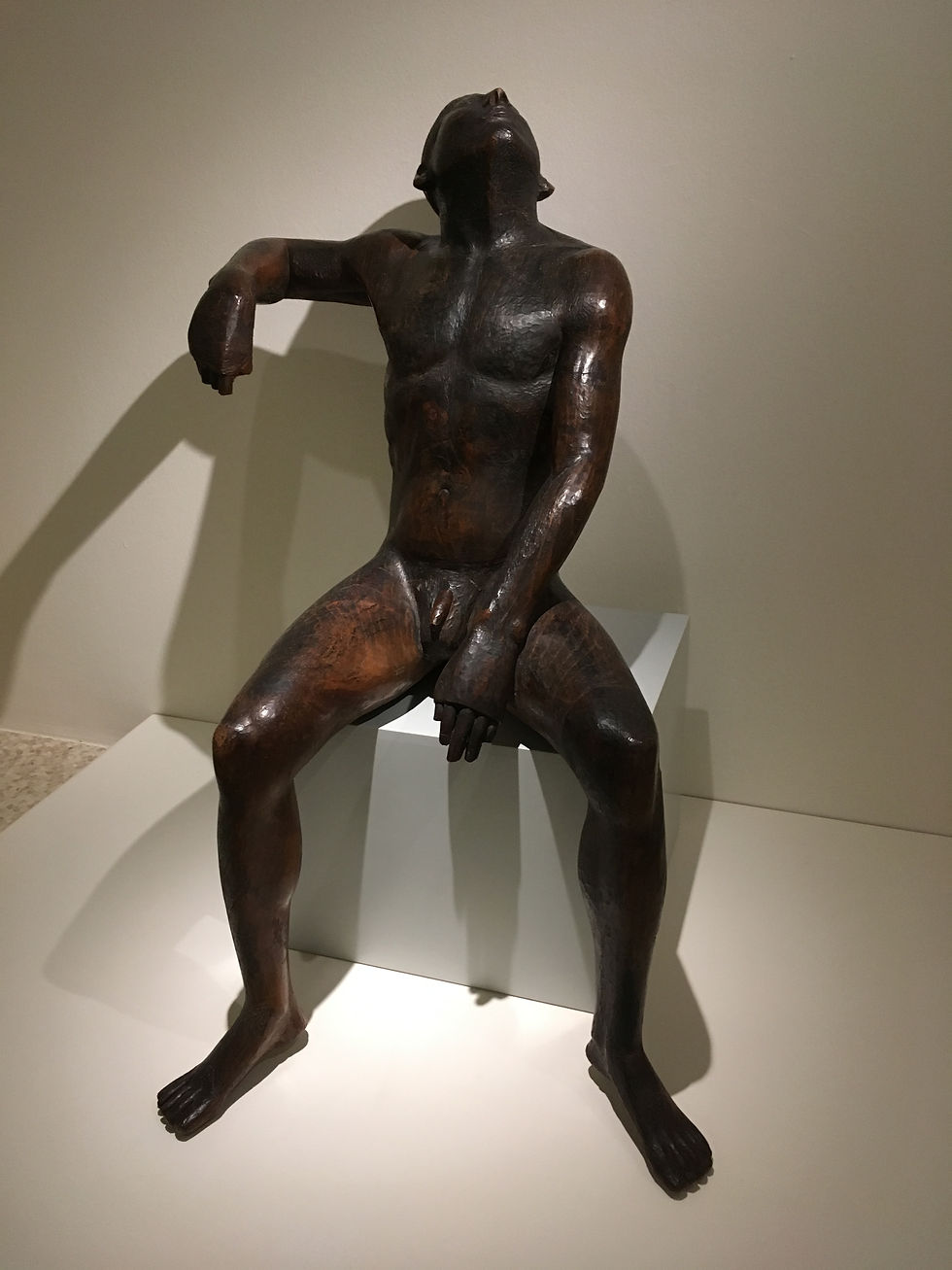The Etruscan Influence: Campigli and Marini
- Rossella BLUE Mocerino

- Nov 17, 2021
- 2 min read
Updated: Feb 7, 2023
The Etruscans were an ancient people who inhabited the region of Italy between the Arno and Tiber rivers. The height of their civilization occurred in the 6th century BCE.

Two 20th century artists who were highly influenced by Etruscan art are the painter Massimo Campigli and the sculptor Marino Marini. Being influenced does not mean these artists copied what they saw. They molded Etruscan images into their own very personal artistic statements. It’s obvious Etruscan art played an important part in their mature work but there is no mistaking Campigli’s work for that of Marino Marini and there is no mistaking their work as Etruscan.






The Etruscans themselves were great collectors and admirers of Greek art. They transformed the perfect images of the Greeks into a more realistic representation and they gave individual features to their figures. The Etruscans made nude statues before the Greeks and they were known to integrate Eastern motifs in their compositions. Again, they took the influence of Greek and other cultures and made them their own. The Romans themselves were influenced by Etruscan art and they became their cultural heirs.

Marino Marini came in contact with Etruscan art at the Museo Archeologico of Florence and later on with the Museo Nazionale Etrusco of Villa Giulia in Rome. The Villa Giulia collection was also the catalyst in framing the content of Massimo Campigli’s best known work. The sculptor Marini used to refer to the Etruscans as “i miei padri più vivi, più attuali, più vicini a noi.” (“My ancestors more alive, more relevant, closer to us”). Born and raised in Tuscany, he affirmed: “Io sono un etrusco.” (“I am an Etruscan”). The painter Massimo Campigli pointed out :”A pagan happiness entered my paintings in the spirit of both my subjects and work, which became freer and more lyrical”. Campigli further clarified: “At Villa Giulia, I met something that was already inside of me. I see, understand, retain only what is already inside me”.



What Campigli and Marini captured from Etruscan artifacts is the warmth and the polychrome colors of the terracotta sculptures, the use of many of their images and symbols - busts, urns, riders on horses, portraits of women wearing necklaces, the poses and frontal views of their subjects, the simplicity and realistic portrayal of their subjects and the look of wall frescoes. But no one but Marino Marini captures the physical and emotional relationship of rider and horse in his sculptures. By no means are the horses secondary to the human figure they carry. They are an integral part of the journey.


Massimo Campigli’s paintings are populated largely by women and very often by “twins”, two women with similar poses and similar serene facial characteristics. Campigli explains: ”And my faces are monotonous because, after all, I am always looking for just one face, as once did a whole period of art”.


I was lucky enough to visit the Etruscan Museum of Villa Giulia in 2018. During the winter of 2018, I found myself in Venice while the Guggenheim was showing an exhibition on MarinoMarini entitled, ‘Marino Marini. Visual Passions’. I was again in Venice in 2021 and saw the ‘Massimo Campigli and the Etruscans’ at Palazzo Franchetti.




Comments